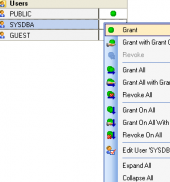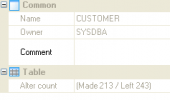Firebird Maestro online Help
| Prev | Return to chapter overview | Next |
BLOB Editor
BLOB Editor is a tool to view and edit BLOB data in the following ways: hexadecimal dump, plain text, graphical image, HTML page, or PDF document. BLOB Editor is invoked from data grid of any table editor or the result tab of SQL Editor and Visual Query Builder by double clicking of the BLOB field to be edited or with the Edit BLOB link of the field's popup menu. The editor also can be called from BLOB Viewer with the Edit current BLOB button.
With BLOB Editor you can work with all BLOB columns of the grid. To switch between columns, select the necessary one from the BLOB field list.
BLOB Editor allows you to navigate between the grid records using the Previous and Next buttons. You can load the new BLOB content and save or clear it using corresponding buttons. After changes are made, click the Post button to apply the changes or the Cancel button to discard them.
| Prev | Return to chapter overview | Next |




 Download
Download Buy
Buy
